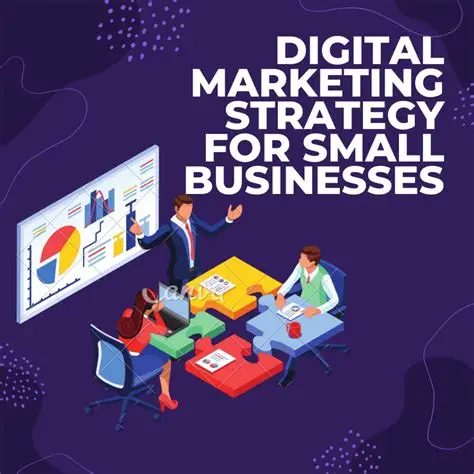In the world of SaaS, product marketing sits at the intersection of customer needs, product development, and revenue growth. But how do you measure the effectiveness of your efforts?
Tracking the right metrics is critical—not just to show ROI, but to make smarter, data-driven decisions. Whether you’re launching a new feature, optimizing onboarding, or crafting go-to-market strategy, here are the SaaS product marketing metrics that truly matter.
1. Product Adoption Rate
Why it matters: If users aren’t adopting the product (or specific features), even the best marketing campaigns can’t fix that.
How to track it:
Adoption Rate=(New Active UsersTotal Signups)×100\text{Adoption Rate} = \left( \frac{\text{New Active Users}}{\text{Total Signups}} \right) \times 100
Use it to: Identify where users drop off and where to optimize onboarding or user education.
2. Activation Rate
Why it matters: This metric tells you how many users are experiencing the core value of your product—often called the “aha moment.”
How to define: Depends on your product. For a project management tool, it might be “created 3 projects in 7 days.”
Use it to: Measure onboarding effectiveness and improve time-to-value.
3. Customer Acquisition Cost (CAC)
Why it matters: You need to know how much you’re spending to bring in a new customer.
Formula:
CAC=Sales + Marketing CostsNumber of New Customers\text{CAC} = \frac{\text{Sales + Marketing Costs}}{\text{Number of New Customers}}
Use it to: Optimize campaign spend and evaluate the efficiency of each acquisition channel.
4. Customer Lifetime Value (CLTV)
Why it matters: CLTV shows how much revenue you can expect from a customer over time.
Formula:
CLTV=Average Revenue per User (ARPU)×Customer Lifespan\text{CLTV} = \text{Average Revenue per User (ARPU)} \times \text{Customer Lifespan}
Use it to: Balance your CAC and make informed decisions about how much to invest in acquiring users.
5. CAC-to-LTV Ratio
Why it matters: This is the ultimate SaaS health metric.
Healthy benchmark: Aim for a ratio of 3:1 (you earn $3 for every $1 spent acquiring a customer).
Use it to: Ensure your growth is profitable and sustainable.
6. Churn Rate (Logo & Revenue)
Why it matters: Retention is more important than acquisition in SaaS.
-
Logo Churn = % of customers who cancel
-
Revenue Churn = % of revenue lost due to downgrades/cancellations
Use it to: Spot red flags in product-market fit or onboarding.
7. Net Promoter Score (NPS)
Why it matters: NPS measures user satisfaction and brand loyalty.
Scale: -100 to 100, based on “How likely are you to recommend us?”
Use it to: Identify evangelists, spot detractors, and feed customer feedback into roadmap planning.
Also Read: Advanced Product Marketing Training
8. Feature Engagement Metrics
Why it matters: Tracks which features drive value and which go unnoticed.
Examples:
-
Clicks per feature
-
Time spent using specific modules
-
Task completion rates
Use it to: Prioritize product messaging and roadmap based on real usage.
9. Trial-to-Paid Conversion Rate
Why it matters: Your trial users are a goldmine—if they convert.
How to track:
Trial-to-Paid=(Paid Customers from TrialsTotal Trial Users)×100\text{Trial-to-Paid} = \left( \frac{\text{Paid Customers from Trials}}{\text{Total Trial Users}} \right) \times 100
Use it to: Refine onboarding, pricing, and product education strategies.
10. Marketing Qualified Leads (MQLs) to Product Qualified Leads (PQLs)
Why it matters: MQLs are only valuable if they turn into engaged users.
PQL definition: A lead who has taken key actions within the product that indicate buying intent.
Use it to: Align marketing and product teams around high-intent user behavior.
Final Thoughts
SaaS product marketing is both art and science—but the science part depends on tracking the right metrics. Focus on KPIs that go beyond vanity (like website traffic) and zero in on what drives product usage, customer value, and long-term revenue.
SaaS Product Marketing FAQ
1. What is SaaS product marketing?
Answer: SaaS product marketing focuses on positioning, messaging, and promoting software-as-a-service products. It bridges the gap between product, sales, and customers by driving awareness, adoption, and retention.
2. How is product marketing different from traditional marketing?
Answer: Product marketing is more focused on go-to-market strategies, user personas, product positioning, and customer onboarding, while traditional marketing focuses more broadly on brand awareness and lead generation.
3. What are the key responsibilities of a SaaS product marketer?
Answer: Core responsibilities include:
-
Crafting product messaging and positioning
-
Launching new features or products
-
Enabling sales teams with content and training
-
Driving product adoption and usage
-
Gathering user insights and competitive intelligence
4. What metrics should SaaS product marketers track?
Answer: Key metrics include:
-
Product adoption rate
-
Activation rate
-
CAC (Customer Acquisition Cost)
-
CLTV (Customer Lifetime Value)
-
Churn rate
-
Trial-to-paid conversion
-
NPS (Net Promoter Score)
-
Feature engagement
5. What is a product-qualified lead (PQL)?
Answer: A PQL is a user who has experienced meaningful value from your product (e.g., used a core feature or completed a key action) and is more likely to convert to a paying customer. PQLs are often identified via product usage data.
6. How do you improve SaaS product adoption?
Answer: Focus on:
-
A smooth onboarding experience
-
Clear in-app messaging and guides
-
Demonstrating quick time-to-value
-
Personalized user flows
-
Ongoing customer education and support
7. How can product marketers support sales teams?
Answer: Through:
-
Battlecards
-
Competitive analysis
-
Use case-driven pitch decks
-
Product training
-
Messaging frameworks
-
Case studies and ROI calculators
8. What’s the role of customer feedback in product marketing?
Answer: It’s critical. Feedback informs messaging, helps shape the roadmap, improves onboarding, and identifies new opportunities. It ensures your marketing is rooted in real user needs—not assumptions.


